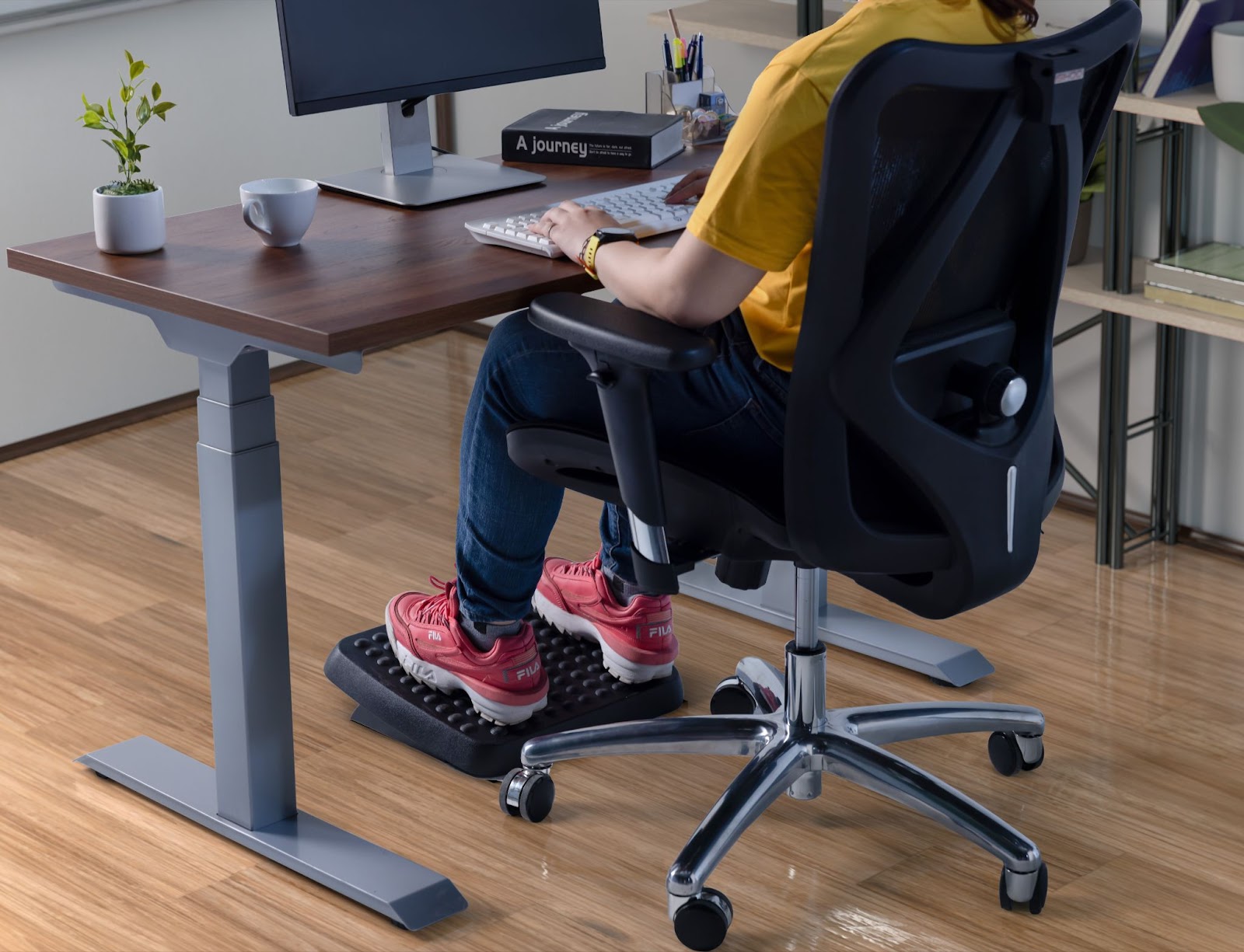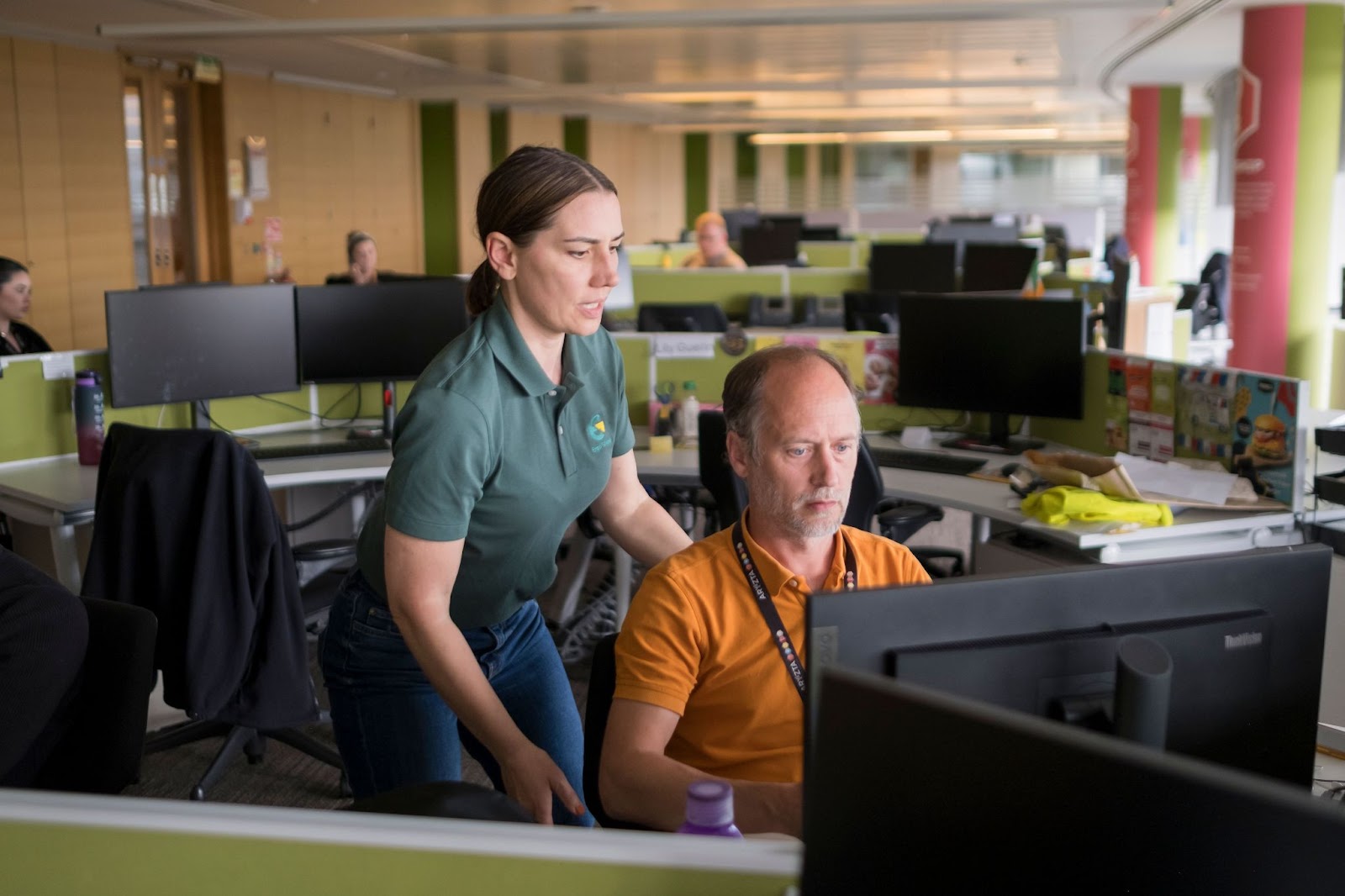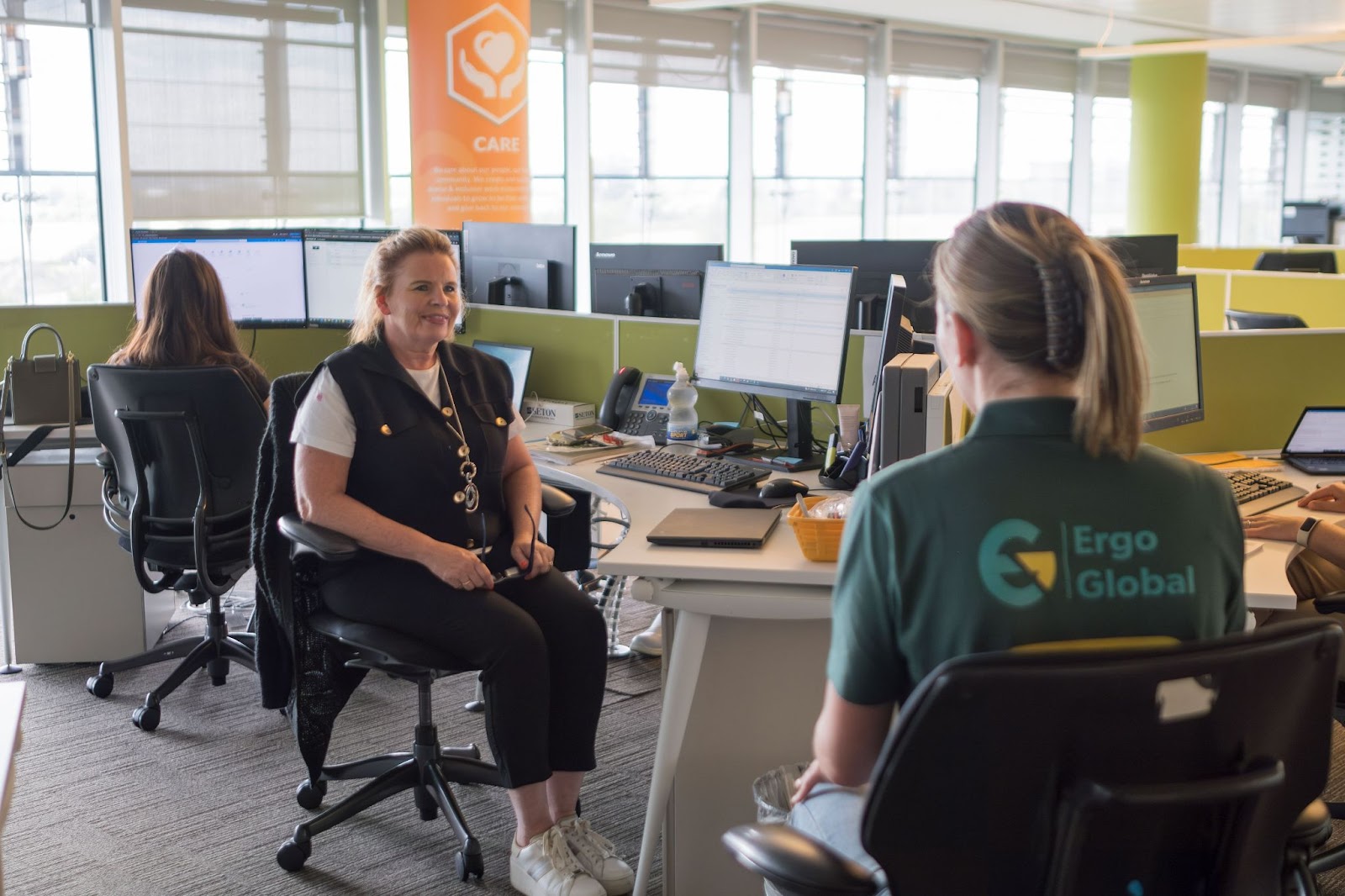When you set up your workstation, the first things that come to mind are the desk, chair, monitors, mouse, and keyboard. These are all very important aspects to apply ergonomic principals to. Lighting, however, also plays a major role. But it is often something that is missed.
WHY IS LIGHTING IMPORTANT?
Correct lighting is essential to prevent eye strain and thus increase productivity at work. Blurred vision, dry or red eyes, fatigue, and headaches are all symptoms of eye strain. Eye strain can be caused by glare or shadows or simply by spending too long looking at a screen. Both too much and too little can be detrimental.
Lighting recommendation will differ depending on the type of work you are doing, where your workstation is located and your own personal requirement for light.

LIGHTING CONSIDERATIONS
- Use task lighting to adequately illuminate writing and reading tasks while limiting brightness around your monitor.
- Do not position the lamp so that their light bounces off of the screen.
- Use glare guards to reduce or eliminate glare on your screen if needed.
- Check that your screen is at a right angle to bright lights such as uncovered windows as much as possible.
- Use blinds to cover bright sunlight from windows as necessary.
- Tilt your monitor down to prevent it from reflecting.
- Lights with more yellow tones are easier on the eyes.
THE 20-20-20 RULE
It is important that when using a screen, for every 20 minutes of screen time, stop and look away at something 20 feet away for at least 20 seconds. These regular screen breaks give your eyes some much-needed rest and help prevent eye strain.
ERGONOMICS SUPPORT FOR YOUR COMPANY
To learn more about office setup and good ergonomics principles, you can reach out to Fit for Work to talk about how an ergonomic programme within your office can increase productivity, increase staff satisfaction, improve staff retention and reduce sick leave.



